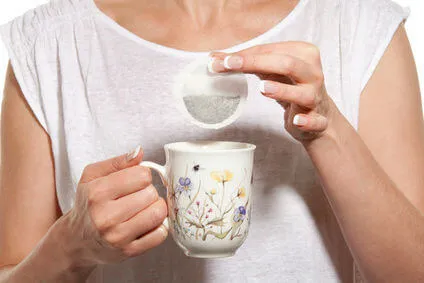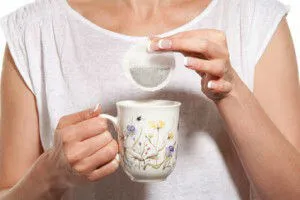
- Share on Facebook221
- Share on Pinterest
- Share on Twitter
“Tea is a work of art and needs a master hand to bring out its noblest qualities. We have good and bad teas, as we have good and bad paintings — generally the latter.”
KAKUZO OKAKURA, Book of Tea
With cold and flu season knocking on the door, it is time to boost up the old immune system with a few standby herbs and foods. In addition to eating a balanced diet, limiting processed foods, getting plenty of rest and exercising daily, drinking a few cups of tea, especially green and black tea daily can really rev up your defense system to keep nasty bugs at bay.
Historical documentation shows us that tea is a very ancient elixir, that was first drank thousands of years ago. There is just something comforting about a warm cup of tea that many of us are drawn to.
Teas can be black, green, white or oolong. All of these are made from leaves from the Camellia sinensis plant. Herbal teas, such as peppermint and chamomile are not really pure teas but rather infusions of plants with different nutritional characteristics.
Health Benefits of Tea
The health benefits of tea are due to its high content of flavonoids. These are plant-derived compounds that are antioxidants. Out of the four tea types, green tea is the best food source, having a group of antioxidants known as catechins. According to Harvard Health Publications, catechins have shown to be more powerful than vitamins C and E in stopping oxidative damage to cells and appear to have other strong immune boosting and disease-fighting characteristics.
Studies associate green tea with the following health benefits:
- Improved weight loss
- Lowered blood pressure
- Reduced risk of cancer
- Protection from diminished cognitive function
- Reduced mortality from all causes
- Prevention of Type 2 diabetes
- Reduced risk of bone fractures
- Prevention of liver disease
- Prevention of atherosclerosis
Besides powerful antioxidants, green tea increases the number of “regulatory T cells” in the body, which, according to the Linus Pauling Institute at Oregon State University, are important for optimal immune system function.
Making the Perfect Cup of Tea
Believe it or not, there is a method to making the perfect cup of tea. Although the strength of your tea is a personal preference and the longer you let your tea steep, the stronger it will be, there are other things to consider.
Choosing Safe Tea: When you purchase your tea make sure that it has not been treated with epicholorodyrin. The National Institute for Occupational Safety states that epicholorodyrin is found in pesticides, coffee filters, paper tea bags and the casing of sausage. The main problem with this toxin is what happens when it comes in contact with water.
Its composition is altered, and creates a new form called 3-MCPD, which is highly dangerous. Also, avoid tea bags that are “mesh like” or in fancy shapes. These are also likely to contain chemicals.
Always buy organic tea or you risk that it has been sprayed with pesticides. Don’t give up on your tea, just practice, as always, ‘caveat emptor’ when making choices for you and your family. As with any food, the less humans have tampered with it, the better.
Water: Always use fresh and filtered water to make your tea – never treated tap water. The better your water tastes, the better your tea will taste.
 Steeping Time: A team at the University of Northumbria’s School of life Science found that the best tasting tea resulted from 2 minutes of steeping followed by 4 minutes of setting. This allows the water to cool from boiling to an optimal temperature that encourages the strongest release of flavors. If the tea is left to cool too long the flavors seem to be destroyed.
Steeping Time: A team at the University of Northumbria’s School of life Science found that the best tasting tea resulted from 2 minutes of steeping followed by 4 minutes of setting. This allows the water to cool from boiling to an optimal temperature that encourages the strongest release of flavors. If the tea is left to cool too long the flavors seem to be destroyed.
Maximum Antioxidant Benefit: While you can pour water over your tea bag and let it set, you can get 5x the antioxidant power from your tea by simply bobbing the bag up and down a few times in the water. Although this takes a little more effort, it is well worth it, especially if you want to get all of the health promoting benefits from your tea. If your tea bag does not have a string, use a spoon to dip and remove the bag.
-The Alternative Daily
Sources:
http://www.ncbi.nlm.nih.gov/pubmed/17183063
http://www.ncbi.nlm.nih.gov/pubmed/21715508
http://www.ncbi.nlm.nih.gov/pubmed/18349292
http://www.ncbi.nlm.nih.gov/pubmed/17827443
- Share on Facebook221
- Share on Pinterest
- Share on Twitter

